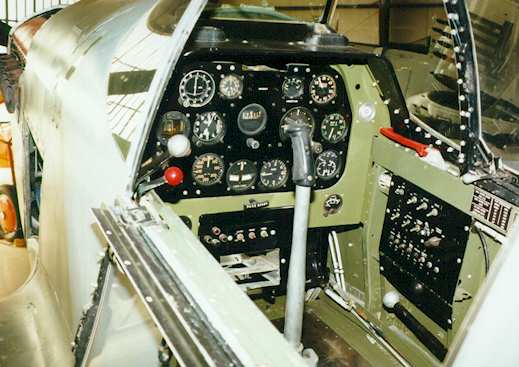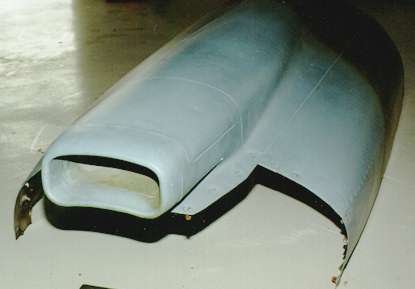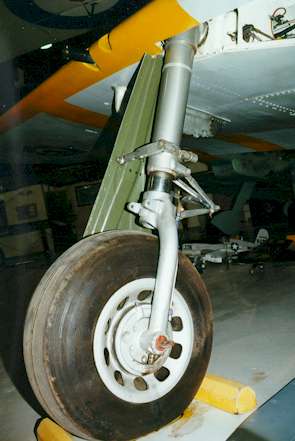by Martin Waligorski
Allison-powered Mustangs
Voted by many as the ultimate piston-engined fighter of World War II, the Mustang is a true classic of aviation history. As such it has also been an extremely popular modelling subject.
When hearing the name Mustang, most people will probably associate it with a P-51D, the version which can be most often seen at the airshows, in the aviation press and in the museums. The P-51D represented a peak of Mustang development, or even a bit past that peak – some people would say that it’s handling qualities were below that of the outstanding first Merlin-powered version, a P-51B/C. Nevertheless the Mustang saga began much earlier with the British orders, dive-bombers and reconnaissance aircraft.
The full review of early Mustang variants can be found in the accompanying article Modeller’s Guide to Early P-51 Mustang Variants by Joe Baugher, so there’s no need of repeating it here.
The preserved earlier Mustangs are rare. Therefore I was especially glad to see one on my visit to Planes of Fame museum’s Grand Canyon division in Arizona. This P-51A is still airworthy. It was used by Stateside training units during the war, and was bought by the museum from a technical college in 1957.
The original serial of this airframe is 43-6251, but the aircraft is currently painted in the colors of RAF Mustang Mk. I marked RU * M, serial number AG470. Why this RAF camouflage in an American museum? There is a good reason to that.
As most of the reader will probably know, the Mustang was first operated exclusively by the Royal Air Force. The first Mustang Mk. I operational sortie took place on July 27, 1942. A month later Mustang Mk. Is participated in the Dieppe landings by Canadian and British commandos on August 19, 1942. During this operation, pilots of No 414 Squadron of the RCAF were attacked by the Focke-Wulf Fw 190s. Pilot F/O Hollis H. Hills shot down one of the enemy, which became the first Mustang ’kill’. He had flown RU * M on this sortie.
Considering that F/O Hollis Hills was an American volunteer, and a Californian, the museum’s choice of markings seems just right!
North American P-51A Mustang in Detail
The P-51A on display in Grand Canyon Planes of Fame museum, Arizona.
Already on the first look it becomes apparent that Mustang’s aerodynamic design was absolutely state-of-the-art. The carefully streamlined shape and perfect surface finish are notable even by today’s standards. Despite of what you may have seen on may scale kits of the Mustang, panel division lines are barely noticeable.. Photo: Martin Waligorski
For once, let’s start our walkaround from the tail. Nothing in the P-51 shape was curved that could be made straight – to ease the production process. Hence all flying surfaces, like the fin here, had straight spars, leading and trailing edges.
This view shows also some detail of the tail wheel.
Although this aircraft’s paint scheme and colors match the wartime scheme of the RU * M, it is not perfect. The font used for the serial AG470 is of modern variety, an thus entirely incorrect for the period. The similar comment applies to the squared unit letters RU on the previous picture. Photo: Martin Waligorski
Detail of the cockpit hood.
The rear side window has been overpainted with a circular opening left to simulate the RAF Mustang Mk. I tactical reconnaissance version which had a camera lens in this place, but behind a differently shaped Plexiglas. Obviously the camera equipment is missing here. Photo: Martin Waligorski
A look into the cockpit. The office is almost complete, sans the gunsight. The pilot seat has been also temporarily removed, but not much of it would be seen from this angle anyway. Photo: Martin Waligorski
The powerplant visible here is an Allison V-1710 water-cooled, twelve-cylinder engine. An air intake to the downdraught carburettor can be seen over it’s rearmost cylinders.
The Allison was longer than the later Merlin, but it had smaller cross-section, allowing for the gracefully streamlined nose. Note how the spinner’s curvature is smoothly overtaken by the fuselage contours. Photo: Martin Waligorski
A closer view on the uncovered engine from the port side.
An open panel to the right shows a part of engine bearing, painted white. Photo: Martin Waligorski
Top engine cover featured an integrated carburettor intake duct. Photo: Martin Waligorski
Underwing cooler intake was modified several times during Mustang’s development, and the one visible here is different from both early production machines and later Merlin-powered variants. Photo: Martin Waligorski
Main undercarriage leg and cover…
Photo: Martin Waligorski
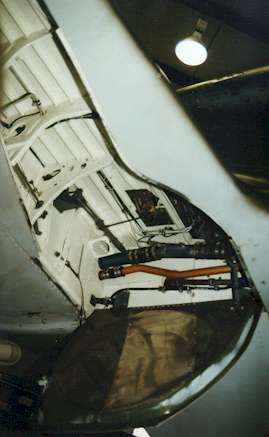 …and a starboard wheel well. The slightly unusual perspective comes from the camera being laid on the ground.
…and a starboard wheel well. The slightly unusual perspective comes from the camera being laid on the ground.
Note also the inner surface of the main wheel cover. These inner covers were designed to be fully closed on the parked aircraft. However, the gradually falling hydraulic pressure would cause them to drop slowly and sometimes at odd angles. The one shown here is about 3/4 open.
Photo: Martin Waligorski
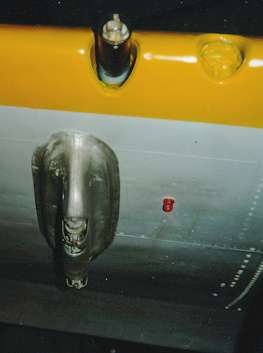 In the early Mustang development, nothing was changed more often than the armament. A combination of an external underwing store and four 0.50-calibre guns is an ultimate recognition feature of the P-51A.
In the early Mustang development, nothing was changed more often than the armament. A combination of an external underwing store and four 0.50-calibre guns is an ultimate recognition feature of the P-51A.
Several original components are missing here.
While both guns have been removed, the mock-up of the outer one’s barrel has been re-installed, while the inner port has been only crudely blocked off with some ”masking material” (Parafilm M, perhaps?). Also, the bomb rack is missing, only the fairing remains.
Photo: Martin Waligorski
This article was originally published in IPMS Stockholm Magazine in November 1999.



